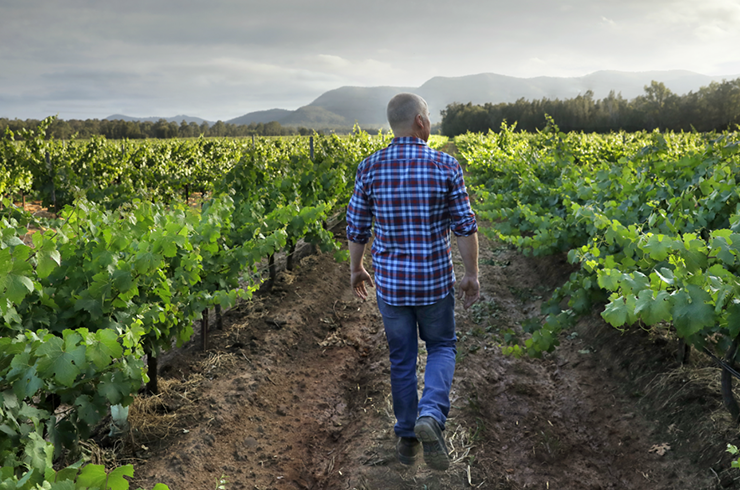Author and presenter Justine Schofield shot to fame in the first season of MasterChef Australia. Here, she lets us in on her travelling cellar, and shares gastronomic highlights from her French upbringing and the secret to perfecting one of the show's most controversial dishes.

H. What does your wine cellar look like?
J. At the moment I live between Sydney, Brisbane and Melbourne, so I bring a small cellar along with me wherever I go and it really is a mixed bag. Whenever I travel, I like to pick up local wines and bring them back home. I have a collection from all over Australia – from Western Australia, all the way down to Tasmania – and, of course, some treasures from my European travels. But I don’t like to hold onto them too long. I’m more than happy to open a bottle on a special occasion.
J. I appreciate wine on its own, particularly a really good one. But growing up in a French family, I was taught at a young age that wine and food go hand in hand, and both show their individual beauty when paired well together. A freshly shucked oyster with a glass of bubbles is sensational, but if you’ve ever had an oyster with a glass of shiraz, you’ll understand why balance is paramount to the dining experience.
J. The French do enjoy the finer things in life and food is central to absolutely everything. At breakfast, you’re talking about what to have for lunch, and at lunch you’re talking about what to have for dinner. That heritage is really important to me – especially now I can’t get back there.
H. I imagine you’ve been to some pretty incredible places in the world. Do you have a favourite food and wine experience?
J. I have so many, but they’re really not fancy. I get goosebumps when I think about being in my family’s hometown of Arcachon, just outside Bordeaux. In nearby Cap Ferret, there’s this little restaurant called La Cabane d’Hortense and I have beautiful memories of eating freshly shucked oysters, prawns and pâté, which are all regional specialities, with a gorgeous French rosé, sitting in the sun, looking over the sea. Something about that experience is so pure, but it evokes such enjoyment and pleasure. Everything is so simple so there’s nowhere to hide – just beautiful, fresh, traditionally produced food and wine.
H. Is there one French wine region that holds a special place in your heart?
J. Before we stopped being able to travel, I spent some time in Provence in the South of France. I visited some of the bigger wineries in the region, but also a few of the smaller, boutique producers, and it was sensational to meet the winemakers and get a behind-the-scenes experience. The families who own these little châteaux have had their vineyards for generations, and sitting down to have lunch with them while trying their wines is something I will never forget. Drinking rosé in Provence in summer – does it get any better than that?
H. Obviously you’re a rosé lover, but are there any other varieties that you really enjoy?
J. When I’m in Victoria, I like to focus on drinking Victorian wine and I particularly love chardonnay from the Yarra Valley. I’m a big Giant Steps fan – their chardonnay is incredible. I also love Tassie wines, in particular their reds. I’m very passionate about Tasmanian pinot noir. Pooley is a favourite – it’s light, but with a savoury, rounded flavour. Recently, I’ve found myself stepping away from really heavy reds, even in winter. Growing up with a French background, I’ve always liked those lighter, more refined styles on my palate.
H. Is there a dish you think everybody should know how to cook?
J. Risotto is one of those things that often isn’t made properly. There are two schools of thought when it comes to risotto – the thick risotto or the really wet risotto, and I’m very much for the latter. Generally, people go wrong by over-mixing it. A lot of recipes call for you to keep stirring the rice to release the starches, but the best way to go about it is to just agitate the pan for a creamy, smooth, velvety look. And never ever – this is what I learned in Italy – serve a risotto in a bowl, always on a plate. This ensures a more delicate feeling on your palate. Oh, and make sure you have a glass of wine next to you when you’re cooking.
H. What would your last meal be?
J. Foie gras and a glass of champagne is my ultimate. Or steak, chips and a pinot noir – and bearnaise sauce. You can’t forget the bearnaise sauce.
This is an extract of a story from issue #60 of Halliday magazine. Become a member and receive the print publication and digital access, as well as unlock more than 150,000 tasting notes.



